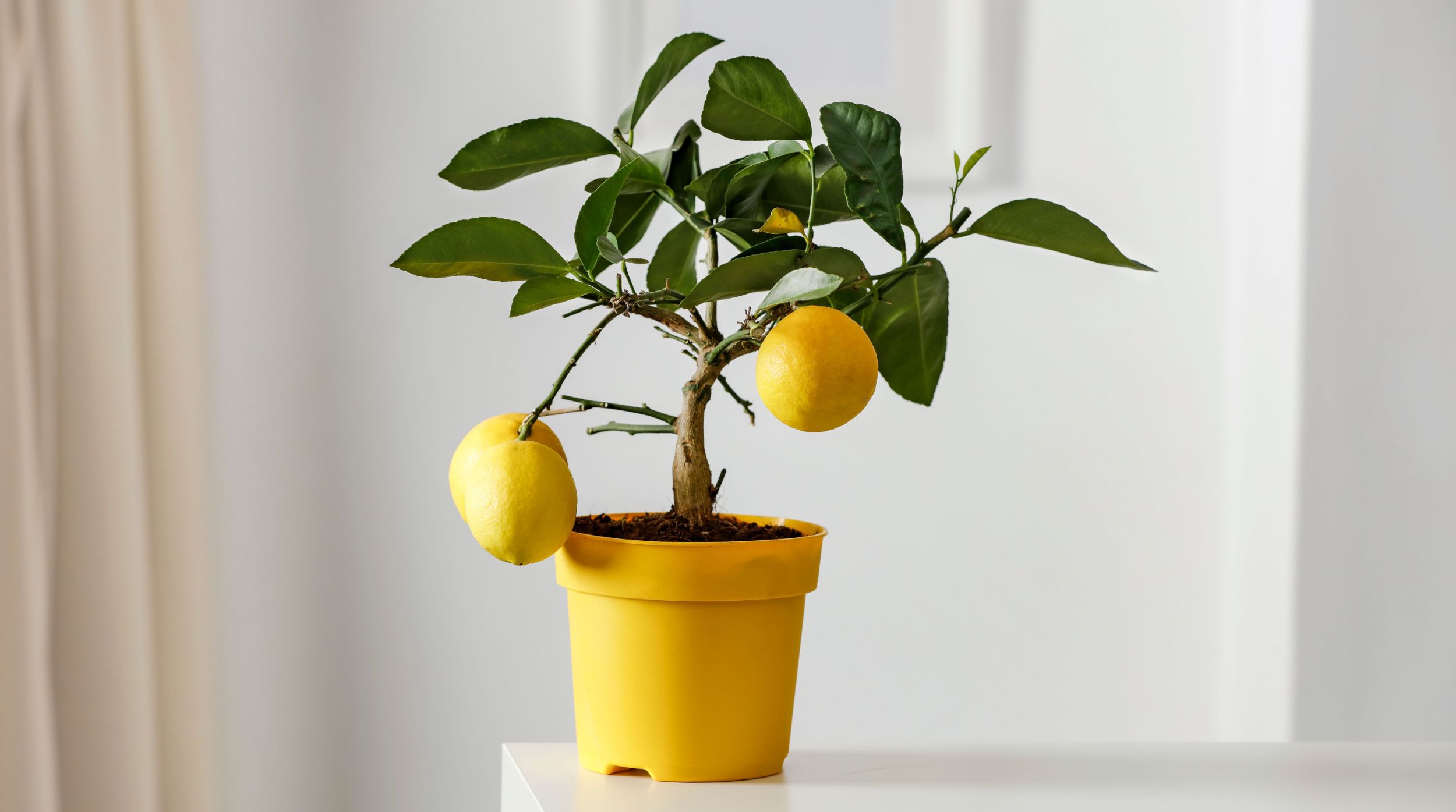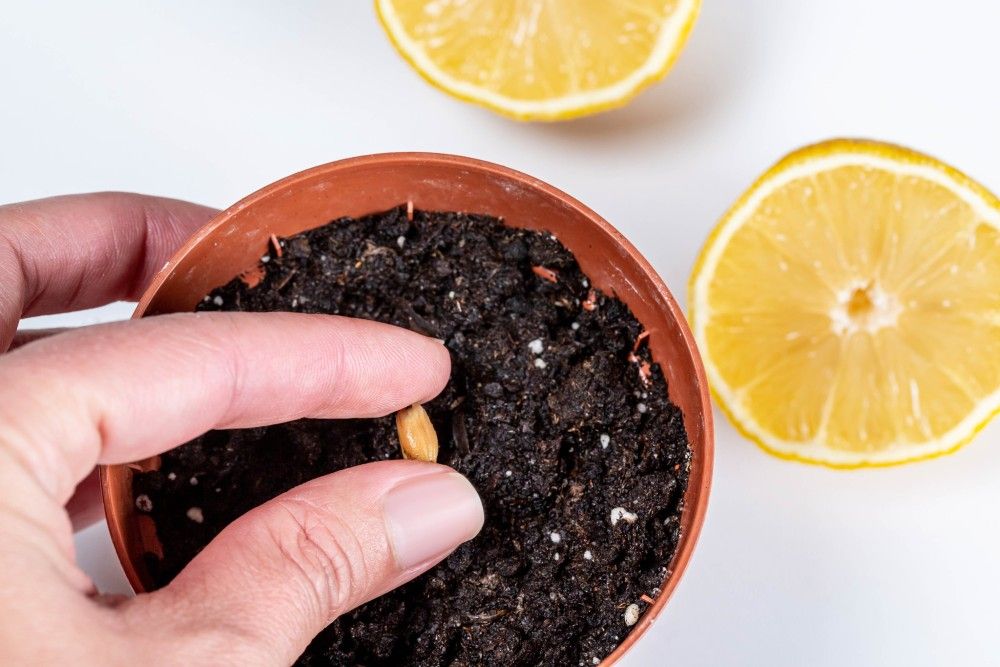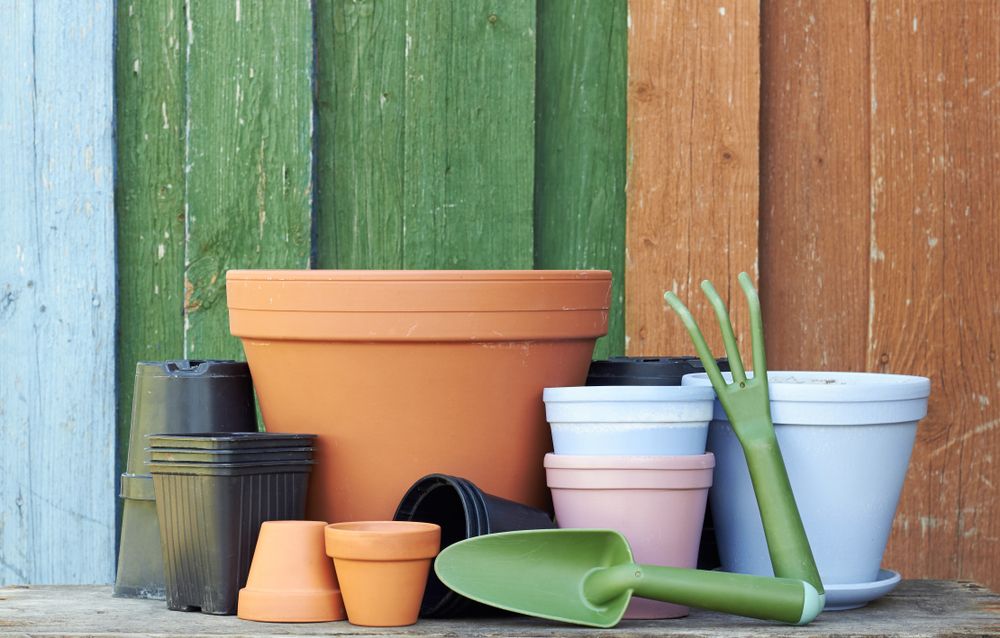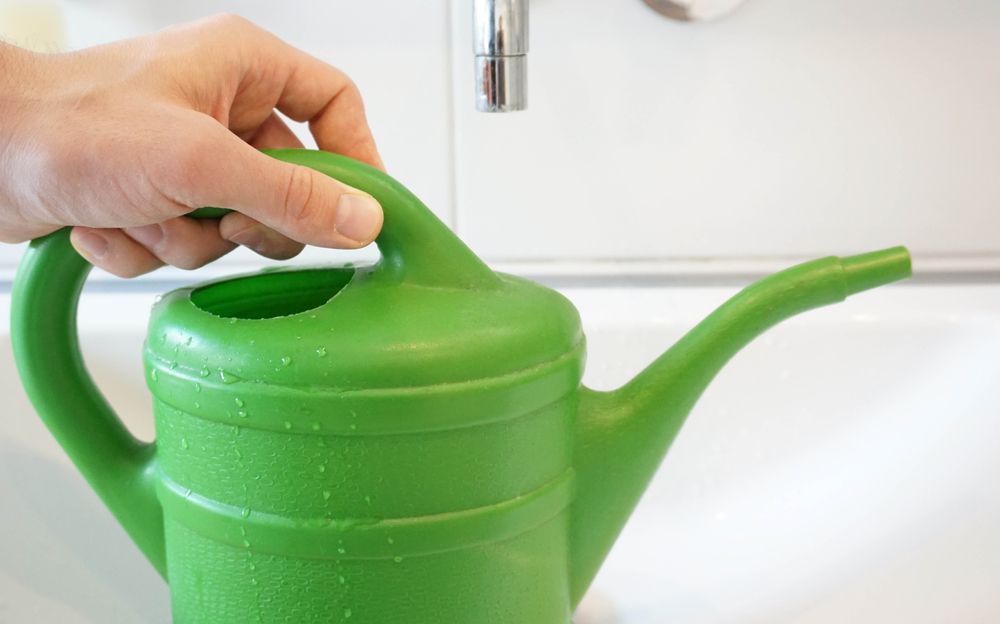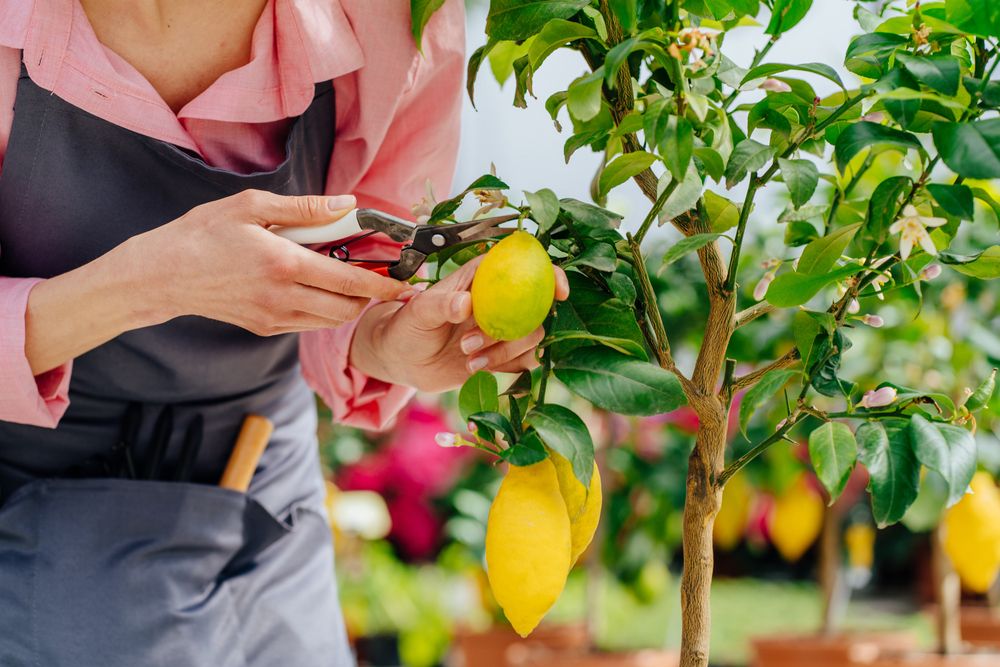Citrus trees make great potted plants to enjoy indoors; they provide a lemon harvest and visual appeal! The scented white blooms are a show in the spring, while the bright yellow fruit and green foliage are striking during the growing season. Function and beauty are the perfect combination!
Citrus trees do not make it past the first few years of life outside their natural climate because of frost. Additionally, lemon trees are the most cold-sensitive of the citrus family. Potting a lemon tree allows you to bring the plant indoors and protect it from cold temperatures, allowing plant lovers to enjoy it in less-than-ideal climates.
If you want to learn how to grow your lemon tree in a pot, just follow these steps and start enjoying your tree at home!
Materials Required
Image credits: verchmarco via Creative Commons
To help set you up for success, here are some materials to have on hand:
- Large pot/container
- Plant caddy (optional)
- Potting mix (soil, perlite, peat)
- Shears
- Water
- Fertilizer
How to Grow Lemon Trees in Pots
Follow these steps to learn how to get your lemon tree growing and thriving in a pot!
Step 1: Choose a Lemon Tree
Image credits: Yellow.Cat via Creative Commons
Selecting the right species of lemon tree is the first step. The popular choice for an indoor or potted lemon tree is either the Ponderosa or Meyer species. These are dwarf varieties that will suit the limited space of a pot best. Keep in mind that the final size of the tree you end up with directly correlates to the size of the pot you use.
Whether you choose to start from seed or with a maturing tree will depend on how quickly you would like to have a fruit-bearing plant. Lemon trees will not produce fruit until they are mature, which takes one to three years. Once fully mature, lemon trees typically bear fruit in fall but species like the Meyer may produce all year.
Step 2: Pot Selection
Image credits: teatian via Shutterstock
Larger pots (three gallons and up) work well for lemon trees and should have adequate drainage holes. Lightweight containers or a plant caddy under heavy pots are a good idea if you plan to move the tree around your home depending on the season.
Lemon trees will outgrow their pots in four to five years. If you want to encourage growth, repot into a larger container at this time. However, if you are content with the size of your citrus tree then simply remove it from the pot, trim back the roots, give them fresh soil, and place them back into the same pot.
Step 3: Potting Medium
Image Credits: Miriam Doerr Martin Frommherz via Shutterstock
The best environment for citrus trees is slightly acidic and well-draining. An ideal pot mix combination for your lemon tree is equal parts potting soil, perlite, and peat.
When purchasing a lemon tree from a nursery, start by removing it from the pot and medium it came in. Gently spray the root ball with water to expose some of the outer roots. This helps the roots establish themselves quickly. Once you have the outer roots exposed, repot into your pot of choice along with the new potting mix.
As a heavy nitrogen consumer, apply a slow-release fertilizer to the lemon tree during its growing season, which is generally from April through to September.
Step 4: Sunlight and Location
Image credits: Victoria Kurylo via Shutterstock
When growing citrus trees indoors, consider a south-facing window that provides 8 to 12 hours of bright direct sunlight per day. If achieving this naturally is not possible, supplement with a grow light.
The optimal indoor temperature should remain between 65 degrees and 75 degrees Fahrenheit during the day, and 55 degrees to 65 degrees Fahrenheit at night. If temperatures drop below 55 degrees Fahrenheit, the lemon tree goes into dormancy.
Moving your lemon tree outdoors for the summer is a great way to give it all the possible sunlight. When spring arrives, climatize the citrus tree by bringing it out for small periods, gradually increasing as temperatures rise. Do the opposite in the fall, making sure to keep it indoors once temperatures go below 32 degrees Fahrenheit.
Step 5: Water
Image credits: ThePhotoFab via Shutterstock
Lemon trees need moist soil to thrive. Check on your potted lemon tree one to two times per week and only water if the upper 2 inches of soil feel dry. When it is time, water until the excess comes out of the drainage holes in the bottom, making sure to not leave the pot in any standing water.
Keep the humidity level high in winter when indoor conditions are generally dry, by misting or wiping down the leaves. Wiping the leaves can also deter any pests that may attempt to invade.
Step 6: General Care and Maintenance
Image credits: Iryna Inshyna via Shutterstock
As your lemon tree grows, general pruning helps to make sure the plants' energy is going to the right spot, like fruit-bearing! Prune any damaged branches or branches that are growing in an undesirable direction. Pruning will allow you to shape your lemon tree properly, as its weight can become undistributed. If thorns are present, you can remove them at any time without damage to the tree.
Remove the fruit from the tree to help maintain its health and to prevent it from alternate bearing, meaning only producing fruits every second year.
Pro Tip: You can propagate your lemon tree and multiply your collection by using stem cuttings that are slightly hard. Take care to only remove the shoots during the growing season.
When Life Gives You Lemons
Whether you'd like to enjoy a harvest of homegrown lemons, or simply enjoy their visual appeal, growing lemon trees in pots is the answer! Follow a few guidelines by considering things like pot size and potting mix requirements and you will be on your way to a thriving potted lemon tree!
Do you grow a potted lemon tree? Share your favorite species and comment on your experience below!

